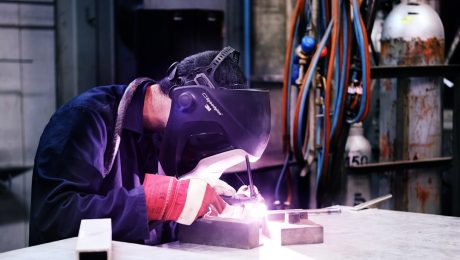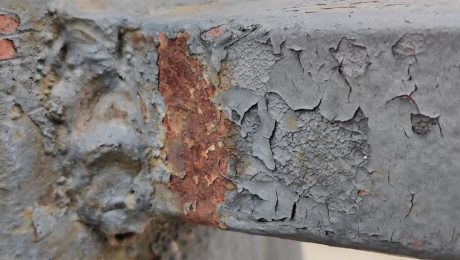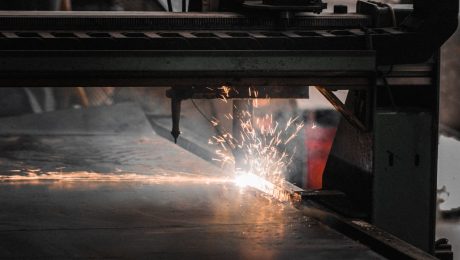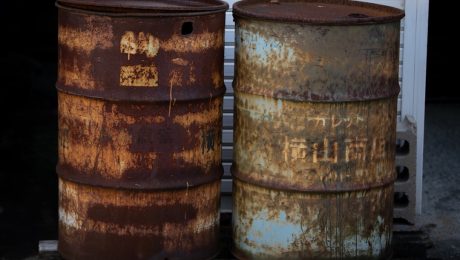In today’s interconnected world, businesses and individuals alike frequently engage in global commerce. This necessitates a thorough understanding of the global delivery process, a complex network involving numerous players and intricate steps. This comprehensive guide will demystify this process, providing a detailed look at each stage, from order placement to final delivery.
1. Order Placement and Processing: The Starting Point
The journey begins with the customer placing an order. This seemingly simple act triggers a cascade of events. The order is processed by the seller, who verifies the details, confirms availability, and calculates the total cost, including shipping fees. This stage involves crucial data entry, ensuring accurate information is passed along throughout the supply chain. Efficient order management systems are vital for minimizing errors and processing orders quickly. Integration with inventory management systems is also key, preventing overselling and ensuring timely order fulfillment. Automation plays a crucial role in streamlining this initial phase, reducing manual intervention and potential human error.
2. Packaging and Warehousing: Preparing for the Journey
Once the order is confirmed, the goods need careful packaging to protect them during transit. The type of packaging depends on the product’s fragility and the shipping method. Robust packaging is essential to prevent damage and ensure the product arrives in perfect condition. This stage often involves warehousing, where goods are stored temporarily before shipping. Efficient warehousing practices involve strategic inventory management, optimizing storage space, and ensuring quick retrieval of goods when orders are processed. Proper labeling is crucial, including clear addresses, customs declarations (for international shipments), and any necessary handling instructions. Barcode scanning and RFID tagging are increasingly used for efficient tracking and management within the warehouse.
3. Transportation and Freight Forwarding: Navigating the Global Network
This stage involves selecting the most appropriate transportation mode – air, sea, or land – depending on factors like cost, speed, and the nature of the goods. Freight forwarders play a crucial role here. They act as intermediaries, managing the logistics, coordinating transportation across different modes and countries, and handling customs documentation. They negotiate rates with carriers, track shipments, and handle any unexpected delays or issues. Choosing the right freight forwarder is crucial, as their expertise can significantly impact the efficiency and cost-effectiveness of the delivery process. This stage also involves tracking and monitoring the shipment’s progress, providing real-time updates to both the seller and the buyer.
4. Customs Clearance and Border Control: Navigating International Regulations
For international shipments, navigating customs regulations is a critical aspect of the global delivery process. This involves completing necessary customs declarations, providing accurate information about the goods, and paying any applicable duties and taxes. Customs authorities inspect shipments to ensure compliance with import regulations and to prevent the illegal trafficking of goods. Delays can occur due to incomplete documentation or discrepancies in information. Freight forwarders often assist with customs clearance, handling the paperwork and ensuring a smooth passage through customs. Understanding the specific regulations of the destination country is crucial to avoid delays and potential penalties.
5. Last-Mile Delivery and Customer Receipt: The Final Stage
The final stage involves the last-mile delivery, the movement of the goods from the international transportation hub to the customer’s doorstep. This is often the most challenging part of the process, as it involves navigating local traffic, varying delivery addresses, and coordinating with local delivery services. Real-time tracking and delivery notifications are crucial for keeping the customer informed and managing expectations. Successful last-mile delivery requires efficient routing, optimized delivery schedules, and reliable delivery partners. The final step is the customer receiving the goods and confirming their satisfactory condition. This often involves providing a signature or other confirmation of receipt.
The global delivery process is a complex interplay of various factors. Understanding each stage and the roles of different players is essential for ensuring efficient and reliable delivery of goods across borders. From efficient order management to navigating international regulations and ensuring timely last-mile delivery, each step contributes to the overall success of the process.
SEO-Friendly Tags:
- Global Delivery
- International Shipping
- Supply Chain Management
- Customs Clearance
- Freight Forwarding
body { font-family: sans-serif; line-height: 1.6; }
h1, h2, h3 { color: #333; }
img { max-width: 100%; height: auto; }
At GloballSteel, quality isn’t just a department; it’s the very foundation of our operations. We are committed to delivering superior steel products that meet and exceed our customers’ expectations. This commitment is embodied in our comprehensive Quality Management System (QMS), a meticulously designed framework that governs every aspect of our business, from raw material sourcing to final product delivery.
ISO 9001 Certification: The Cornerstone of Our QMS
Our dedication to quality is formally recognized through our ISO 9001 certification. This internationally recognized standard demonstrates our adherence to a robust quality management system, ensuring consistent product quality, customer satisfaction, and continuous improvement. The ISO 9001 framework provides a structured approach to managing our processes, minimizing risks, and maximizing efficiency. Our certification is regularly audited to maintain the highest standards and ensure ongoing compliance.
Rigorous Testing and Inspection Procedures: Ensuring Uncompromising Quality
GloballSteel employs a multi-layered approach to quality control, incorporating rigorous testing and inspection procedures at every stage of the manufacturing process. From incoming raw material inspection to final product testing, our dedicated quality control team utilizes state-of-the-art equipment and methodologies to ensure that every steel product meets our stringent specifications. These tests include chemical analysis, mechanical testing (tensile strength, yield strength, elongation), dimensional checks, and visual inspections. Data from these inspections is meticulously documented and analyzed to identify trends and areas for improvement.
Supply Chain Management: Partnering for Quality
Recognizing that quality begins even before the manufacturing process, GloballSteel meticulously manages its supply chain. We select our raw material suppliers based on their proven track record of quality and reliability. We maintain close relationships with our suppliers, ensuring consistent material quality and timely delivery. Regular audits of our suppliers are conducted to verify their compliance with our quality standards and to foster continuous improvement throughout the entire supply chain. This collaborative approach ensures that only the highest-quality materials are used in our manufacturing process.
Continuous Improvement: A Commitment to Excellence
At GloballSteel, quality is not a static goal; it’s a journey of continuous improvement. We actively seek opportunities to enhance our processes, reduce defects, and improve customer satisfaction. We utilize various tools and methodologies, including statistical process control (SPC), root cause analysis (RCA), and regular internal audits, to identify areas for improvement. Our commitment to continuous improvement is reflected in our ongoing investment in advanced technologies, employee training, and process optimization initiatives. We believe that continuous refinement is essential to maintaining our competitive edge and exceeding customer expectations.
Customer Focus: Delivering Exceptional Value
Ultimately, our Quality Management System is driven by a deep commitment to our customers. We understand that their satisfaction is paramount. We strive to understand their specific needs and provide customized solutions that meet their unique requirements. We actively seek customer feedback and use it to inform our continuous improvement efforts. Our commitment to transparency and open communication ensures that our customers are fully informed about the quality of our products and our commitment to exceeding their expectations. We believe that building strong, long-term relationships with our customers is essential to our continued success.
GloballSteel’s commitment to quality is unwavering. Our comprehensive QMS ensures that we consistently deliver superior steel products that meet the highest industry standards. We are confident that our dedication to quality will continue to drive our success and solidify our position as a leading provider of high-quality steel.
SEO-Friendly Tags:
- GloballSteel QMS
- ISO 9001 Steel Manufacturing
- Steel Quality Control
- Continuous Improvement in Steel Industry
- Supply Chain Management in Steel
Winter’s harsh conditions can wreak havoc on building materials. Freezing temperatures, snow, ice, and de-icing salts pose significant challenges to the longevity and structural integrity of various components. However, galvanized steel, with its protective zinc coating, offers exceptional performance in cold climates, making it a popular choice for a wide range of applications. This post delves into the specifics of galvanized product performance in freezing conditions, exploring its strengths and limitations.
Unwavering Corrosion Resistance in Freezing Temperatures
One of the primary advantages of galvanized steel is its superior corrosion resistance. The zinc coating acts as a sacrificial anode, protecting the underlying steel from rust and degradation. Even in cold, damp environments where moisture can accelerate corrosion, the zinc layer continues to provide effective protection. The process of corrosion itself slows down in colder temperatures, but the galvanized coating remains a crucial barrier, preventing the ingress of moisture and oxygen that are essential for rust formation. This is especially important in cold climates where snow and ice melt, creating periods of wetness followed by freezing, a cycle that can accelerate corrosion in unprotected steel.
The Impact of Snow and Ice Removal on Galvanized Steel
Snow and ice removal practices can inadvertently damage building materials. The use of abrasive tools, scrapers, or de-icing chemicals can scratch or erode the surface, potentially exposing the underlying steel to corrosion. While galvanized steel is more resistant to this damage than unprotected steel, it’s still crucial to employ careful snow and ice removal techniques. Using softer tools, avoiding excessive force, and opting for less corrosive de-icing agents can help prolong the lifespan of galvanized products. Regular inspection for any signs of damage and prompt repair or replacement of affected areas is also recommended.
Addressing Thermal Bridging in Cold Climates
Thermal bridging occurs when heat escapes from a building through conductive materials, leading to energy loss and potential issues with condensation. Galvanized steel, while possessing good strength and durability, is a relatively good conductor of heat. This can be a concern in cold climates, particularly in applications like roofing or wall cladding. To mitigate this, proper insulation techniques are crucial. Using appropriate insulation materials and ensuring proper installation to minimize gaps and air infiltration can significantly reduce thermal bridging and improve the overall energy efficiency of the building.
Galvanized Steel’s Performance in Different Cold Climate Applications
The performance of galvanized steel varies slightly depending on the specific application. For example, galvanized roofing sheets perform exceptionally well in snowy climates, providing robust protection against the elements while requiring minimal maintenance. Galvanized steel used in fencing or railings also demonstrates excellent durability, even in icy conditions, provided proper installation and maintenance are followed. However, in applications where the steel is constantly exposed to harsh de-icing chemicals, more frequent inspections and potential protective coatings may be required to ensure long-term performance.
Maintenance and Longevity of Galvanized Products in Cold Climates
While galvanized steel is inherently durable, regular maintenance can significantly extend its lifespan in cold climates. This includes regular inspections for any signs of damage, such as scratches, dents, or corrosion. Prompt repairs are crucial to prevent the spread of damage. Additionally, choosing high-quality galvanized products with a thicker zinc coating will offer enhanced protection against the elements. Regular cleaning to remove accumulated snow, ice, and debris can also prevent potential damage from moisture and corrosive substances. In areas with heavy snowfall or aggressive de-icing practices, consider applying a protective coating over the galvanized steel for added durability.
In conclusion, galvanized steel offers excellent performance in cold climates due to its inherent corrosion resistance and robust nature. While understanding the potential challenges posed by snow, ice, and de-icing chemicals is crucial, proper installation, maintenance, and consideration of thermal bridging can ensure the long-term durability and effectiveness of galvanized products in even the harshest winter conditions.
SEO Tags:
- galvanized steel
- cold climate performance
- corrosion resistance
- winter weather protection
- galvanized roofing
Choosing the right materials is paramount in construction. Two titans consistently battle for dominance: concrete and steel. Both offer unique properties, strengths, and weaknesses, making the selection process a crucial decision influenced by factors like project scope, budget, and environmental considerations. This in-depth comparison will help you understand the nuances of each material and make an informed choice.
Strength and Durability: A Tale of Two Titans
Concrete, a composite material of cement, aggregates, and water, boasts exceptional compressive strength – its ability to withstand crushing forces. This makes it ideal for foundations, columns, and walls. However, its tensile strength (resistance to pulling forces) is significantly lower. Steel, on the other hand, excels in both compressive and tensile strength, making it incredibly versatile. While steel can rust if not properly protected, its inherent strength allows for the creation of lightweight yet robust structures capable of withstanding significant loads and stresses. The durability of both materials varies depending on factors such as quality of materials, construction techniques, and environmental conditions. Concrete can crack under extreme stress or freeze-thaw cycles, while steel can be susceptible to corrosion in harsh environments.
Cost-Effectiveness: Balancing Budget and Performance
The cost of concrete and steel can fluctuate depending on location, market conditions, and project scale. Generally, concrete is often considered less expensive upfront for larger projects, particularly in bulk applications. However, the cost of forming and finishing concrete can add to the overall expense. Steel, while potentially more expensive per unit, can offer cost savings in other areas. Its lighter weight can reduce transportation costs, and its ease of fabrication can speed up construction timelines, potentially reducing labor costs. Furthermore, the longevity of steel structures, when properly maintained, can minimize long-term replacement costs. A thorough cost-benefit analysis, considering both initial investment and long-term maintenance, is crucial when comparing the two.
Applications: Where Each Material Shines
Concrete’s high compressive strength makes it the go-to material for foundations, retaining walls, and massive structures like dams. Its versatility also allows for its use in precast elements, paving, and even decorative features. Steel, with its superior tensile strength and flexibility, is frequently used in high-rise buildings, bridges, and frameworks where lightweight yet strong structures are required. It’s also commonly employed in reinforcing concrete, significantly improving its overall strength and resistance to cracking. The choice between concrete and steel often depends on the specific requirements of the project, with many structures utilizing a combination of both materials for optimal performance.
Environmental Impact: Sustainability in Construction
Both concrete and steel production have significant environmental footprints. Cement production, a key component of concrete, is a significant contributor to greenhouse gas emissions. Steel production also consumes substantial energy and generates pollution. However, advancements in sustainable construction practices are mitigating these impacts. The use of supplementary cementitious materials in concrete can reduce its carbon footprint, while recycled steel and improved manufacturing processes are making steel production more environmentally friendly. Life cycle assessments, considering the entire journey from material extraction to disposal, are becoming increasingly important in evaluating the overall environmental impact of both materials.
Maintenance and Lifespan: Long-Term Considerations
Concrete requires minimal maintenance in most situations, though regular inspections for cracking or deterioration are advisable. Proper sealing can extend its lifespan and protect against weathering. Steel, on the other hand, necessitates regular maintenance to prevent corrosion. Protective coatings, such as paint or galvanization, are crucial in extending its lifespan. While both materials can have long lifespans with proper care, steel’s susceptibility to corrosion requires a more proactive maintenance strategy. The choice of material should consider the long-term maintenance costs and the desired lifespan of the structure.
Ultimately, the choice between concrete and steel depends on a careful evaluation of the specific project requirements, budget constraints, and environmental considerations. A thorough understanding of the strengths and weaknesses of each material, coupled with expert advice, is essential for making an informed decision that ensures a safe, durable, and cost-effective structure.
Tags: concrete, steel, construction materials, building materials, structural engineering
In the quest for energy-efficient and sustainable building practices, thermally insulated steel profiles have emerged as a game-changer. These innovative solutions combine the strength and durability of steel with advanced insulation techniques, offering a compelling alternative to traditional materials. This comprehensive guide delves into the world of thermally insulated steel profiles, exploring their benefits, applications, materials, installation, and future trends.
Understanding the Concept of Thermal Breaks in Steel Profiles
The core principle behind thermally insulated steel profiles lies in the incorporation of “thermal breaks.” These breaks are strategically placed insulating materials that interrupt the continuous flow of heat through the steel profile. Steel, being a highly conductive material, readily transmits heat and cold. Thermal breaks act as barriers, significantly reducing heat transfer between the inside and outside of a building. This reduction translates to improved energy efficiency, reduced heating and cooling costs, and a more comfortable indoor environment. Common thermal break materials include polyamide (PA66), fiberglass reinforced polymers (FRP), and polyurethane foam. The choice of material depends on factors such as the required thermal performance, cost, and application.
Applications of Thermally Insulated Steel Profiles: Beyond the Window Frame
While commonly associated with window and door frames, thermally insulated steel profiles find diverse applications in modern construction. They are increasingly used in:
- Curtain wall systems: Creating aesthetically pleasing and highly energy-efficient facades for high-rise buildings and commercial structures.
- Doors: Offering superior strength and security while minimizing heat loss or gain.
- Window frames: Providing slimmer profiles compared to traditional materials while maintaining excellent insulation properties.
- Structural elements: In some innovative designs, thermally broken steel profiles are used as load-bearing components, offering a combination of strength and thermal efficiency.
- Solar shading systems: Integrating with solar shading devices to further enhance energy performance.
The versatility of these profiles allows architects and engineers to create innovative and sustainable building designs.
Materials Used in Thermally Insulated Steel Profiles: A Closer Look
The performance of a thermally insulated steel profile heavily relies on the quality of both the steel and the insulating material. High-quality steel ensures strength and durability, while the insulating material determines the effectiveness of the thermal break. Let’s examine some common materials:
- Steel: Typically galvanized steel or stainless steel is used, offering corrosion resistance and longevity. The steel’s thickness also impacts the overall strength and stiffness of the profile.
- Polyamide (PA66): A popular choice due to its high thermal resistance, excellent mechanical properties, and relatively low cost. It’s often reinforced with glass fibers to improve its strength and dimensional stability.
- Fiberglass Reinforced Polymers (FRP): Offer high strength-to-weight ratios and good thermal insulation properties. They are often used in demanding applications where high mechanical performance is required.
- Polyurethane foam: Provides excellent thermal insulation, but its moisture absorption can be a concern, necessitating careful design and sealing.
The selection of materials often involves a trade-off between cost, performance, and specific application requirements.
Installation and Considerations for Optimal Performance
Proper installation is crucial for maximizing the energy-saving benefits of thermally insulated steel profiles. Improper installation can compromise the integrity of the thermal break and lead to heat transfer. Key considerations include:
- Precision: Accurate measurements and precise cuts are essential to ensure a tight fit and prevent air leakage.
- Sealing: Proper sealing around the profile is crucial to prevent air infiltration, which can significantly reduce the effectiveness of the insulation.
- Fasteners: Choosing the right fasteners and installation techniques is important to avoid compromising the thermal break.
- Experienced installers: Employing experienced and qualified installers is vital to ensure correct installation and optimal performance.
- Quality control: Regular inspections during the installation process can help identify and rectify any potential issues early on.
Careful attention to detail during installation is paramount to realizing the full potential of these energy-efficient profiles.
Future Trends in Thermally Insulated Steel Profiles: Innovation and Sustainability
The field of thermally insulated steel profiles is constantly evolving. Future trends include:
- Advanced materials: Research and development are focused on exploring new insulating materials with even higher thermal resistance and improved durability.
- Improved manufacturing techniques: Innovations in manufacturing processes aim to enhance efficiency and reduce the cost of production.
- Integration with smart building technologies: The incorporation of sensors and controls can optimize the performance of the profiles and enhance overall building energy management.
- Sustainable manufacturing practices: The industry is increasingly adopting sustainable practices to minimize the environmental impact of production and transportation.
- Recyclability: Focus on designing profiles that are easily recyclable at the end of their lifespan to promote a circular economy.
These advancements will further enhance the energy efficiency and sustainability of buildings, contributing to a greener future.
Thermally insulated steel profiles represent a significant step forward in sustainable building design. Their combination of strength, durability, and energy efficiency makes them a compelling choice for a wide range of applications. By understanding their benefits, applications, and installation requirements, architects, engineers, and builders can leverage their potential to create more energy-efficient and environmentally responsible buildings.
Tags: thermally insulated steel profiles, thermal breaks, steel window frames, energy efficient construction, sustainable building materials
Navigating the complex world of international trade requires more than just a great product; it demands meticulous adherence to global safety, quality, and environmental standards. International product certifications are the key to unlocking global markets and ensuring your products meet the necessary requirements for legal sale and consumer acceptance in different countries. This comprehensive guide will delve into the intricacies of these certifications, helping you understand the process and navigate the challenges.
Understanding the Importance of International Product Certifications
International product certifications are not merely bureaucratic hurdles; they are crucial for several reasons. Firstly, they demonstrate your commitment to safety and quality, building consumer trust and brand reputation. Consumers are more likely to purchase products that bear recognized certifications, assuring them of the product’s compliance with established standards. Secondly, these certifications are often legally mandated for importing and selling products in specific countries. Failure to comply can lead to significant fines, product seizures, and even legal repercussions. Thirdly, certifications can streamline the import/export process, reducing delays and administrative burdens. Having the necessary documentation readily available significantly simplifies customs clearance procedures.
Key International Certification Standards and Markings
The world of international product certifications is diverse, with numerous standards and markings specific to different industries and regions. Some of the most common include:
- CE Marking (European Union): Indicates conformity with EU health, safety, and environmental protection legislation. It’s not a single certification but rather a declaration of conformity to specific directives, covering a wide range of products.
- FCC Certification (United States): Applies to electronic products and ensures compliance with the Federal Communications Commission’s regulations on radio frequency emissions and interference.
- RoHS Compliance (Restriction of Hazardous Substances): A directive restricting the use of certain hazardous materials in electrical and electronic equipment, widely adopted globally.
- ISO Certifications (International Organization for Standardization): A family of standards covering various management systems (quality, environmental, occupational health and safety, etc.), providing a framework for continuous improvement and demonstrating commitment to best practices.
- CCC Certification (China Compulsory Certification): Mandated by the Chinese government for a wide range of products entering the Chinese market, ensuring safety and quality.
This is not an exhaustive list, and specific requirements vary greatly depending on the product, its intended market, and the relevant regulations.
The Process of Obtaining International Product Certifications
The process for obtaining international product certifications typically involves several steps:
- Identify Applicable Standards: Research the specific standards and regulations relevant to your product and target markets. This often requires consultation with legal and technical experts.
- Product Testing and Evaluation: Your product will need to undergo rigorous testing by accredited laboratories to demonstrate compliance with the relevant standards. This may involve various tests depending on the product and certification.
- Documentation Preparation: Comprehensive documentation is essential, including technical specifications, test reports, and declarations of conformity. This documentation needs to be meticulously prepared to meet the specific requirements of each certification body.
- Application and Review: Submit your application and supporting documentation to the relevant certification body. They will review your materials and may conduct further audits or inspections.
- Certification Issuance: Upon successful completion of the review process, the certification body will issue the relevant certificate and allow you to use the corresponding marking on your product and packaging.
The entire process can be time-consuming and complex, often requiring the assistance of specialized certification consultants.
Navigating the Challenges of International Certification
Obtaining international product certifications presents several challenges:
- Cost: The process can be expensive, involving testing fees, certification fees, and consultant fees.
- Time: Obtaining certifications can be a lengthy process, potentially delaying your product launch.
- Complexity: Navigating the diverse regulations and standards across different countries can be extremely complex and requires specialized knowledge.
- Language Barriers: Communication with certification bodies and authorities may present language barriers.
- Cultural Differences: Understanding cultural nuances and business practices in different countries is crucial for successful certification.
Careful planning, thorough research, and potentially engaging experienced consultants can help mitigate these challenges.
Maintaining Compliance and Staying Updated
Obtaining certification is only the first step. Maintaining compliance is an ongoing process. Regulations and standards evolve, so staying updated is crucial. Regular audits and inspections may be required to ensure continued compliance. Proactive monitoring of changes in regulations and adapting your product and processes accordingly are essential to avoid future issues and maintain your market access.
Successfully navigating the complexities of international product certifications is critical for businesses aiming for global reach. By understanding the importance, processes, and challenges involved, companies can effectively overcome these hurdles and confidently expand their market presence internationally.
Tags: international product certifications, product certification, global certification, safety standards, regulatory compliance
body { font-family: sans-serif; line-height: 1.6; }
h1, h2, h3 { color: #333; }
code { background-color: #f0f0f0; padding: 2px 4px; border-radius: 4px; }
The steel industry is a cornerstone of modern infrastructure and manufacturing. To ensure the safety, reliability, and consistent quality of steel products, adherence to standardized testing and specifications is paramount. The American Society for Testing and Materials (ASTM) provides a comprehensive framework for these standards, playing a crucial role in guaranteeing the integrity of steel used in everything from skyscrapers to automobiles.
Understanding ASTM Standards for Steel
ASTM International develops and publishes voluntary consensus standards for materials, products, systems, and services. These standards are widely adopted globally, providing a common language and benchmark for quality assurance. Within the steel industry, ASTM standards cover a vast array of specifications, including chemical composition, mechanical properties (tensile strength, yield strength, elongation, hardness), and testing methods. These standards are crucial for ensuring that steel meets the required performance characteristics for its intended application. Specific ASTM designations, often prefixed with “A” (for ferrous metals), identify particular steel grades and their corresponding properties. For example, A36 steel is a common structural steel grade with its own specific ASTM standard outlining its chemical composition and mechanical properties. Understanding these designations is fundamental for anyone working with or specifying steel.
ASTM Testing Methods: Ensuring Steel Quality
ASTM standards don’t just define the properties of steel; they also prescribe the methods for testing and verifying these properties. These methods are meticulously detailed, ensuring consistency and reproducibility across different laboratories and testing facilities. Common ASTM testing methods for steel include:
- Tensile testing (ASTM E8): Determines the ultimate tensile strength, yield strength, elongation, and reduction in area of a steel specimen.
- Hardness testing (ASTM E18): Measures the resistance of a material to indentation, providing an indication of its strength and toughness. Various hardness scales are used, such as Rockwell, Brinell, and Vickers.
- Impact testing (ASTM E23): Assesses the ability of a steel to absorb energy upon impact, indicating its toughness and resistance to brittle fracture.
- Chemical analysis (various ASTM standards): Determines the precise chemical composition of steel, ensuring it meets the specified requirements for its grade.
- Bend testing (ASTM A370): Evaluates the ductility and formability of steel.
The accuracy and reliability of these tests are crucial for ensuring that the steel meets the specified ASTM standards. Proper calibration of equipment and adherence to standardized procedures are essential.
The Importance of ASTM Compliance in Construction
In the construction industry, ASTM compliance is not merely a suggestion; it’s a necessity. Using steel that doesn’t meet the relevant ASTM standards can have catastrophic consequences, leading to structural failures, injuries, and even fatalities. Buildings, bridges, and other structures rely on the predictable performance of steel components, and ASTM standards provide the assurance that these components will perform as expected. Building codes often mandate the use of ASTM-compliant steel, and inspectors routinely verify compliance during construction projects. Failure to comply can result in significant delays, costly rework, and legal ramifications.
Certification and Traceability in ASTM Compliance
Demonstrating ASTM compliance often involves obtaining certifications from accredited testing laboratories. These laboratories conduct independent testing to verify that the steel meets the required specifications. Certification provides assurance to customers and regulatory bodies that the steel has been thoroughly tested and meets the relevant standards. Furthermore, robust traceability systems are essential for tracking the steel from its production through its use in a finished product. This involves maintaining detailed records of the testing results, chemical composition, and other relevant information, allowing for the identification and verification of the steel’s properties throughout its lifecycle. This traceability is critical for identifying and rectifying any potential issues that may arise.
Consequences of Non-Compliance with ASTM Standards
Ignoring ASTM standards can lead to a multitude of negative consequences. These include:
- Structural failures: Steel that doesn’t meet the required strength or toughness can lead to structural collapses, posing significant safety risks.
- Product recalls: If non-compliant steel is used in manufactured goods, it can lead to costly product recalls and damage to reputation.
- Legal liabilities: Companies that fail to comply with ASTM standards can face significant legal liabilities and penalties.
- Insurance complications: Insurance companies may refuse coverage if a structure or product fails due to non-compliant steel.
- Reputational damage: Non-compliance can severely damage a company’s reputation and erode customer trust.
Therefore, robust quality control measures and a commitment to ASTM compliance are essential for any organization involved in the steel production and construction industries.
In conclusion, ASTM compliance is not just a technical requirement; it’s a fundamental aspect of ensuring the safety, reliability, and quality of steel products. Adherence to these standards is crucial for maintaining public trust and protecting lives and property. The comprehensive testing methods and certification processes outlined in ASTM standards provide a robust framework for achieving and demonstrating compliance, paving the way for a more secure and reliable built environment.
SEO Tags:
- ASTM steel standards
- Steel quality control
- ASTM compliance in construction
- Steel testing methods
- ASTM certification
Threaded pipes are a cornerstone of countless industrial and domestic applications, offering a reliable and versatile solution for fluid transfer and structural support. Their unique design, featuring precisely cut threads, allows for secure, leak-proof connections that can withstand significant pressure and stress. This post delves into the key features and advantages that make threaded pipes an indispensable component in various industries.
1. The Mechanics of Threaded Pipe Connections: A Closer Look
The strength and reliability of threaded pipes stem from the precise machining of their threads. These threads create a mechanical interlocking system, where the engagement of male and female threads generates significant frictional resistance. This resistance prevents leakage and ensures a robust connection capable of withstanding considerable pressure. Different thread types, such as NPT (National Pipe Taper), BSP (British Standard Pipe), and others, exist, each designed for specific applications and pressure ratings. The taper in NPT threads, for example, creates a tighter seal as the pipe is tightened, compensating for variations in material and ensuring a leak-proof joint even under high pressure.
The process of threading itself involves specialized equipment, ensuring consistent thread quality and pitch. Inaccurate threading can lead to leaks, weakened connections, and potential system failures. Therefore, the precision of the threading process is paramount to the overall performance and reliability of the threaded pipe system.
2. Enhanced Durability and Longevity: Why Threaded Pipes Endure
Threaded pipes are renowned for their exceptional durability. The strong mechanical connection formed by the threads significantly contributes to this longevity. Unlike other joining methods that might rely on adhesives or seals that can degrade over time, threaded connections offer a consistently strong and reliable bond. This is especially crucial in demanding environments, such as those exposed to extreme temperatures, corrosive chemicals, or high vibration levels.
The material used in the manufacture of threaded pipes also plays a crucial role in their durability. Common materials include steel, galvanized steel, copper, and PVC, each offering unique properties suitable for specific applications. Steel pipes, for instance, offer high strength and resistance to pressure, while PVC pipes provide excellent corrosion resistance and are lightweight, making them ideal for certain applications.
3. Versatility and Adaptability: Threaded Pipes Across Industries
The versatility of threaded pipes is a significant advantage. Their compatibility with a wide range of fittings and accessories makes them adaptable to various applications. This adaptability allows for easy system modifications, extensions, and repairs. Whether it’s plumbing in a residential building, gas lines in an industrial setting, or hydraulic systems in heavy machinery, threaded pipes provide a flexible and reliable solution.
This versatility extends to the range of fluids they can handle. From potable water and wastewater to gases, oils, and chemicals, threaded pipes can be selected based on the material’s compatibility with the specific fluid being transported. Proper selection is crucial to prevent corrosion, degradation, and potential leaks.
4. Leak-Proof Connections: The Key Advantage of Threaded Pipes
The ability to create leak-proof connections is arguably the most important advantage of threaded pipes. The mechanical interlocking of the threads, combined with the use of sealant (where appropriate), ensures a tight seal that prevents leakage. This is particularly important in applications where leaks can be hazardous or costly, such as gas lines or chemical processing plants.
Proper installation is essential for achieving leak-proof connections. This includes ensuring that the threads are clean and free from debris, using appropriate sealant or PTFE tape, and tightening the connection to the manufacturer’s specifications. Over-tightening can damage the threads and compromise the seal, while under-tightening can lead to leaks.
5. Cost-Effectiveness and Ease of Installation: A Practical Choice
While the initial cost of threaded pipes might vary depending on the material and size, they often prove cost-effective in the long run due to their durability and longevity. The reduced need for frequent repairs and replacements can lead to significant cost savings over the lifespan of the system.
Furthermore, threaded pipes are relatively easy to install, requiring only basic tools such as pipe wrenches and potentially sealant or PTFE tape. This ease of installation can reduce labor costs and project timelines, making them a practical choice for various projects, from small-scale residential plumbing to large-scale industrial installations.
In conclusion, threaded pipes offer a compelling combination of strength, durability, versatility, and cost-effectiveness. Their ability to create reliable, leak-proof connections makes them a preferred choice across numerous industries. Understanding their features and advantages allows for informed decision-making when selecting piping systems for various applications.
SEO Tags:
threaded pipes, pipe fittings, plumbing, industrial piping, leak-proof connections
body {
font-family: sans-serif;
line-height: 1.6;
}
h1, h2, h3 {
color: #333;
}
h1 {
font-size: 2.5em;
}
h2 {
font-size: 2em;
}
h3 {
font-size: 1.5em;
}
The oil and gas industry relies heavily on efficient and reliable well construction. Central to this process are casing and tubing – two distinct but interconnected components crucial for drilling, completing, and producing hydrocarbons. This comprehensive guide delves into the intricacies of casing and tubing, exploring their functions, materials, design considerations, installation processes, and the challenges faced in their deployment.
The Vital Role of Casing in Well Construction
Casing is a series of steel pipes cemented into the wellbore during drilling. Its primary function is to provide structural support to the well, preventing wellbore collapse, isolating different geological formations, and protecting freshwater aquifers from contamination. Casing strings are installed in stages, with each string extending to a specific depth and designed to withstand the specific pressures and temperatures encountered at that depth. The diameter of the casing decreases with depth, creating concentric layers within the wellbore.
Different types of casing exist, each serving a specific purpose. Conductor casing is the first string installed, providing stability in shallow, unconsolidated formations. Surface casing protects freshwater aquifers and surface environments. Intermediate casing isolates formations with high pressure or potential for instability, while production casing isolates the producing reservoir and allows for the installation of production tubing.
Understanding the Function of Tubing in Oil & Gas Production
Once the well is drilled and cased, tubing is installed within the production casing. Tubing is smaller in diameter than casing and its primary function is to transport hydrocarbons (oil and gas) from the reservoir to the surface. It also provides a conduit for injecting fluids such as water or gas into the reservoir for enhanced oil recovery (EOR) techniques. Tubing strings are typically made of high-strength steel and are designed to withstand the pressure and temperature conditions within the wellbore.
The design of the tubing string depends on several factors, including the reservoir pressure, fluid properties, and production rate. Different types of tubing exist, including seamless tubing, which is made from a single piece of steel, and welded tubing, which is made from multiple pieces welded together. The choice of tubing material and design is crucial to ensure efficient and safe hydrocarbon production.
Materials and Design Considerations for Casing and Tubing
The selection of materials for casing and tubing is critical to their performance and longevity. High-strength steel alloys are commonly used due to their ability to withstand high pressures and temperatures. The specific alloy used depends on the well’s conditions, such as depth, temperature, and the presence of corrosive fluids. The design of casing and tubing also incorporates various features to enhance their performance, such as external and internal coatings to prevent corrosion, and specialized threads and couplings to ensure a leak-free connection.
Furthermore, the design must account for potential stresses and strains on the pipes, including buckling, collapse, and tension. Advanced computational modeling and simulations are often employed to optimize the design for specific well conditions, maximizing the lifespan and efficiency of the casing and tubing strings.
Installation and Cementing Procedures for Optimal Well Integrity
The installation of casing and tubing is a complex and critical process requiring specialized equipment and expertise. Casing is run into the wellbore using a derrick or drilling rig, and then cemented in place to ensure a strong bond between the casing and the surrounding formation. Cementing is essential for isolating formations, preventing leaks, and providing structural support. The quality of the cement job is crucial for well integrity and safety.
Tubing installation follows casing installation. It’s typically run inside the production casing and connected to surface equipment. Careful attention is paid to ensuring proper connections and preventing leaks. Regular inspections and maintenance are essential to ensure the long-term performance and safety of both casing and tubing strings throughout the well’s operational life.
Challenges and Advancements in Casing and Tubing Technology
The oil and gas industry constantly faces challenges in casing and tubing technology. These include managing high-pressure and high-temperature environments, preventing corrosion and scaling, and dealing with unexpected geological formations. Advancements in materials science, such as the development of corrosion-resistant alloys and high-strength steels, are continuously improving the performance and longevity of casing and tubing. Furthermore, sophisticated modeling and simulation techniques are enabling better predictions of wellbore behavior and optimization of casing and tubing design.
The development of advanced cementing techniques, improved inspection methods, and the use of intelligent completion systems are all contributing to enhanced well integrity and production efficiency. The ongoing pursuit of innovative solutions ensures the continued safe and efficient extraction of hydrocarbons from increasingly challenging environments.
In conclusion, casing and tubing are integral components of oil and gas well construction and production. Understanding their functions, materials, design, installation, and associated challenges is crucial for successful and sustainable hydrocarbon extraction. Continuous advancements in technology are essential to overcome the challenges faced in this demanding industry.
SEO Tags:
- Oil and Gas Casing
- Oilfield Tubing
- Well Completion
- Drilling Engineering
- Reservoir Engineering
body {
font-family: sans-serif;
line-height: 1.6;
}
h1, h2, h3 {
color: #333;
}
Power plants, the behemoths of energy generation, rely on robust and reliable infrastructure to function efficiently and safely. While turbines, generators, and boilers often grab the spotlight, a critical yet often overlooked component is the extensive use of steel profiles. These seemingly simple shapes – beams, channels, angles, and more – form the backbone of countless power plant structures and systems, contributing significantly to their overall performance and longevity. This post delves into the vital role steel profiles play in the heart of energy production.
Structural Integrity: The Foundation of Power Plant Construction
The sheer scale of power plants necessitates strong and stable structures. Steel profiles provide the essential structural support for buildings, cooling towers, and other critical infrastructure. Heavy-duty I-beams and H-beams form the framework of plant buildings, supporting massive equipment and withstanding significant loads. Wide flange beams are commonly used in the construction of elevated walkways and platforms, crucial for maintenance and access. The high tensile strength and ductility of steel allow for efficient load distribution, minimizing material usage while maximizing structural integrity. Careful design and selection of steel profiles are crucial to ensure the overall stability and longevity of the power plant, mitigating risks associated with seismic activity and extreme weather conditions.
Heat Resistance and High-Temperature Applications: Withstanding Extreme Conditions
Power plants operate under extreme temperatures and pressures. Specific steel profiles with enhanced heat resistance are critical in areas exposed to high temperatures, such as boiler housings, flue gas ducts, and heat exchangers. These often utilize specialized alloys, like stainless steel or heat-resistant steel, to withstand prolonged exposure to extreme heat without compromising structural integrity or experiencing significant creep or fatigue. The selection of appropriate steel profiles in these high-temperature applications is crucial for ensuring safe and efficient operation, preventing costly downtime and potential safety hazards.
Precision Engineering and Fabrication: Tailoring Steel to Power Plant Needs
The fabrication of steel profiles plays a crucial role in the precision and efficiency of power plant construction. Advanced techniques like laser cutting, CNC machining, and robotic welding allow for the creation of highly accurate and complex steel components. This precision ensures a perfect fit for various parts, optimizing assembly and reducing construction time. The ability to fabricate custom steel profiles allows engineers to tailor solutions to specific needs, accommodating unique design requirements and maximizing efficiency. This precise fabrication is especially vital in critical systems where tolerances are extremely tight, ensuring seamless integration and optimal performance.
Corrosion Resistance and Protective Coatings: Ensuring Longevity and Safety
Power plants often operate in harsh environments, exposed to moisture, chemicals, and other corrosive elements. To extend the lifespan of steel profiles and prevent corrosion, various protective coatings are applied. Galvanization, painting, and specialized coatings provide a barrier against corrosion, protecting the steel from degradation and ensuring the long-term integrity of the structure. The choice of coating depends on the specific environmental conditions and the level of protection required. Regular inspection and maintenance of these coatings are essential to prevent corrosion and maintain the structural integrity of the power plant.
Sustainability and Recycling: Minimizing Environmental Impact
The construction and operation of power plants have significant environmental implications. The use of steel profiles offers a sustainable advantage. Steel is a highly recyclable material, allowing for the recovery and reuse of steel components at the end of their lifespan. This significantly reduces the environmental impact compared to using other materials with lower recyclability. Furthermore, the use of sustainably sourced steel, produced with reduced carbon emissions, further minimizes the environmental footprint of power plant construction. The incorporation of sustainable practices throughout the lifecycle of steel profiles contributes to a more environmentally responsible energy generation sector.
In conclusion, steel profiles are not merely structural components; they are integral to the safe and efficient operation of power plants. Their versatility, strength, and recyclability make them an indispensable material in the energy sector. Careful consideration of material selection, fabrication techniques, and protective measures ensures the longevity and performance of these critical infrastructure elements, contributing to a reliable and sustainable energy future.
SEO Tags:
- Steel profiles
- Power plant construction
- Steel structures
- Heat resistant steel
- Power plant engineering










